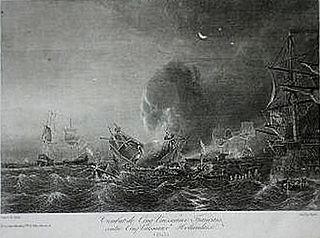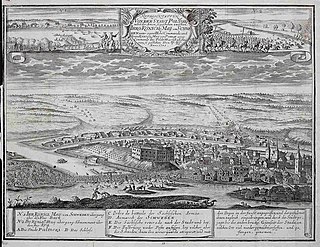 W
WThe Battle of Cap de la Roque was a naval battle that took place on 22 May 1703 between a Dutch convoy protected by captain Roemer Vlack and a French squadron under Alain Emmanuel de Coëtlogon, during the War of the Spanish Succession.
 W
WThe Battle of Ekeren, which took place on 30 June 1703, was a battle of the War of the Spanish Succession. The French surrounded the much smaller Dutch force, which however managed to beat it back, break out and retire to safety. The battle had no strategic effect whatsoever.
 W
WThe Battle of Pułtusk took place on April 21, 1703 in Pułtusk during the Great Northern War. The Swedish army under the command of Charles XII defeated the Saxon army under Adam Heinrich von Steinau.
 W
WThe Siege of Bonn took place in 1703 during the War of the Spanish Succession when an Allied force laid siege to and forced the surrender of the French garrison of the city of Bonn. The Allied forces were part of a general field army commanded by John Churchill, 1st Duke of Marlborough. The siege was portrayed in a contemporaneous painting by Alexander van Gaelen.
 W
WThe Raid on Nassau, on the Bahamian island of New Providence, was a privately raised Franco-Spanish expedition against the English taking place in October 1703, during the War of the Spanish Succession; it was a Franco-Spanish victory, leading to Nassau's brief occupation, then its destruction. The joint Bourbon invasion was led by Blas Moreno Mondragón and Clause Le Chesnaye, with the attack focusing on Nassau, the capital of the English Bahamas, an important base of privateering for English corsairs in the Cuban and Saint Domingue's Caribbean seas. The town of Nassau was quickly taken and sacked, plundered and burnt down. The fort of Nassau was dismantled, and the English governor, with all the English soldiers were carried off prisoners. A year later, Sir Edward Birch, the new English governor, upon landing in Nassau, was so distraught at the ruin he found, that he returned to England after only a few months, without "unfurling his company-issued commission".
 W
WQueen Anne's War (1702–1713) was the second in a series of French and Indian Wars fought in England's Thirteen American Colonies during the reign of Anne, Queen of Great Britain. In Europe, it is generally viewed as the American theater of the War of the Spanish Succession; in the Americas, it is more commonly viewed as a standalone conflict. It is also known as the Third Indian War or as the Second Intercolonial War in France.
 W
WRákóczi's War of Independence (1703–11) was the first significant attempt to topple the rule of the Habsburgs over Hungary. The war was fought by a group of noblemen, wealthy and high-ranking progressives and was led by Francis II Rákóczi. The insurrection was unsuccessful, ending with the Treaty of Szatmár; however, the Hungarian nobility managed to partially satisfy Hungarian interests.
 W
WThe Siege of Thorn was set during the Great Northern War, between Sweden and Saxony from May to October 14, 1703. The Swedish army was commanded by Charles XII of Sweden and the Saxon by General von Kanitz. The siege ended with a victory for Sweden, and the whole garrison surrendered to the Swedes.